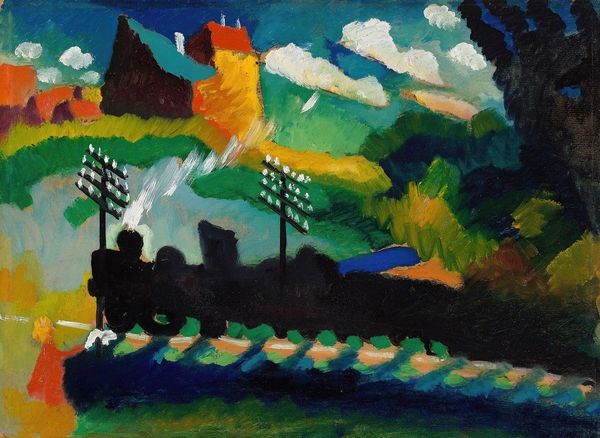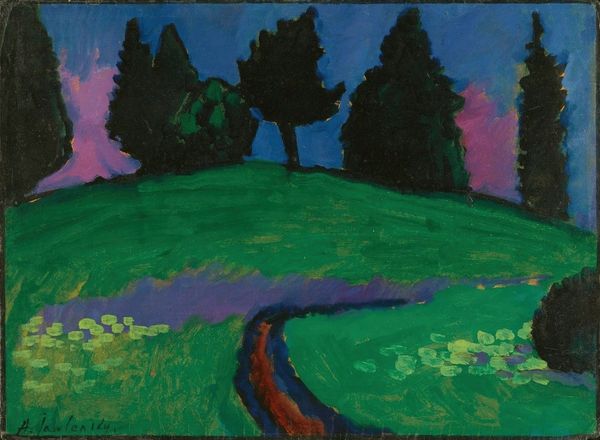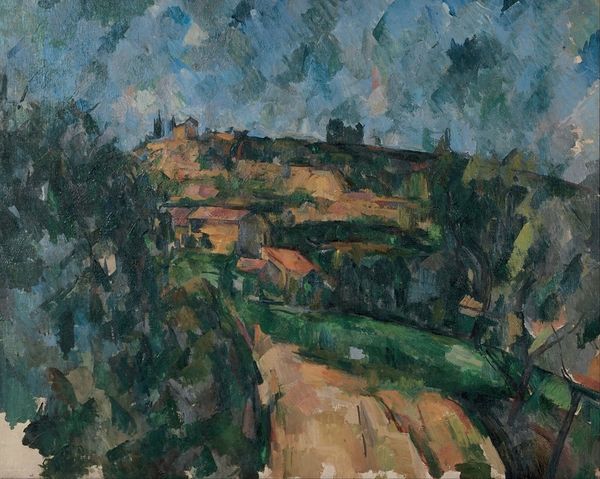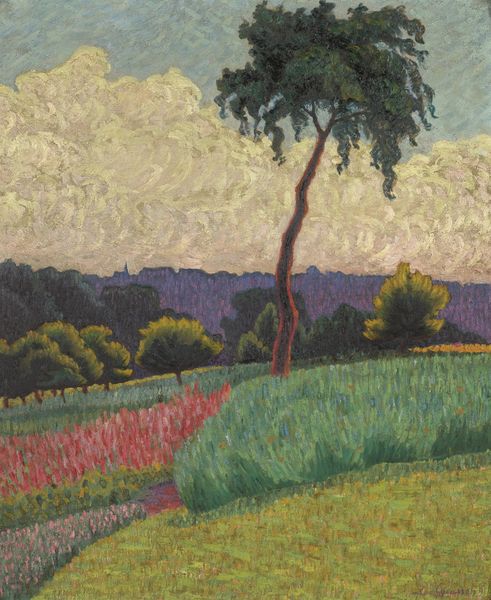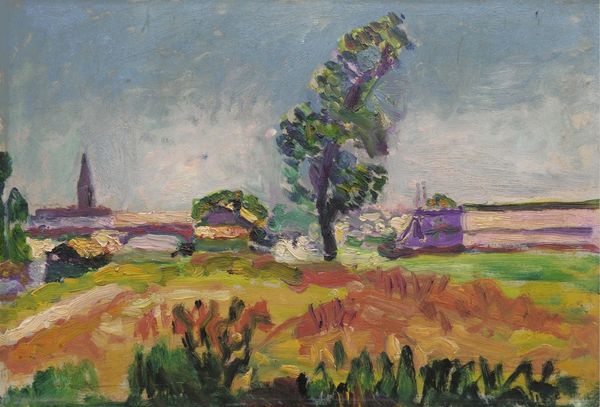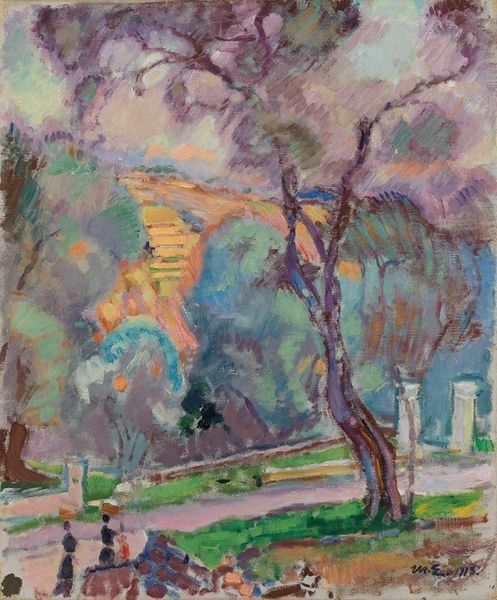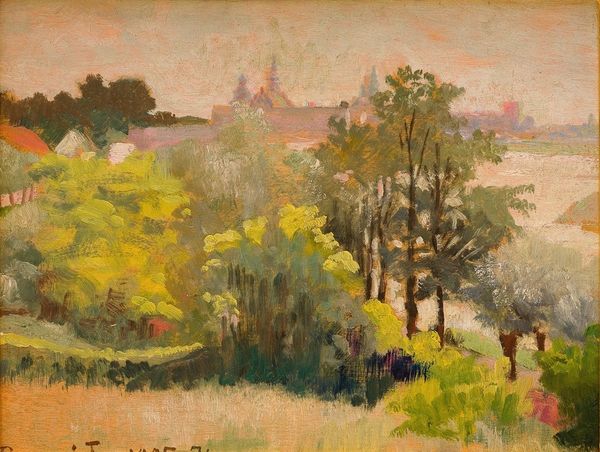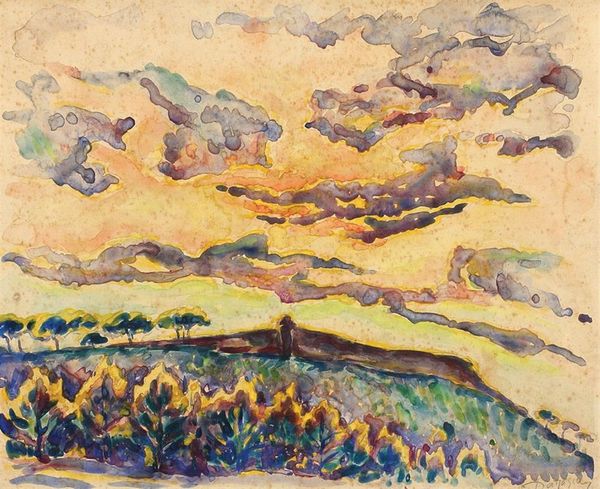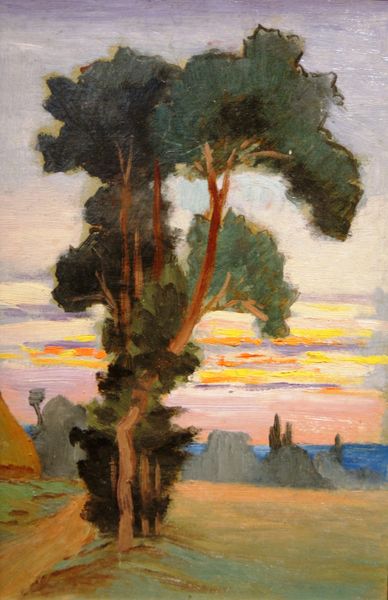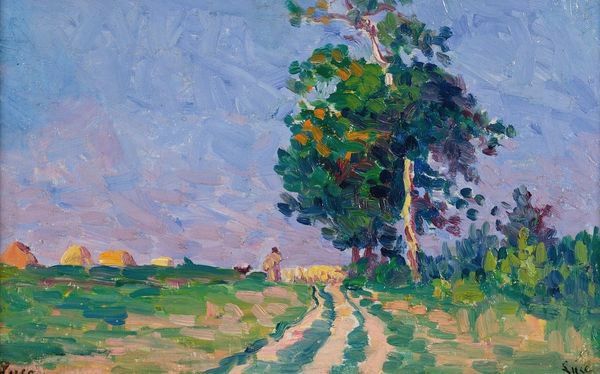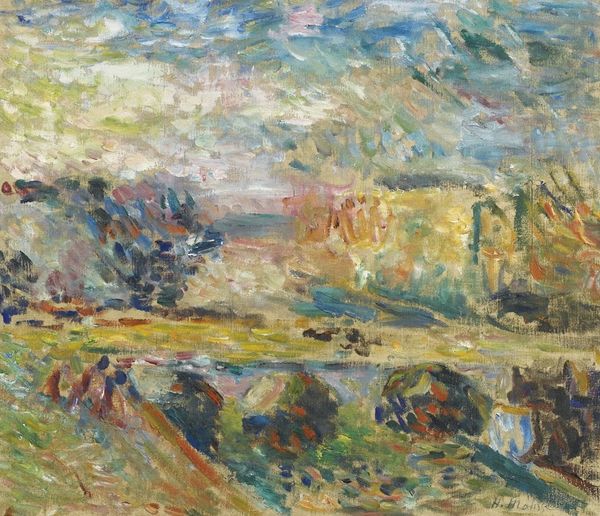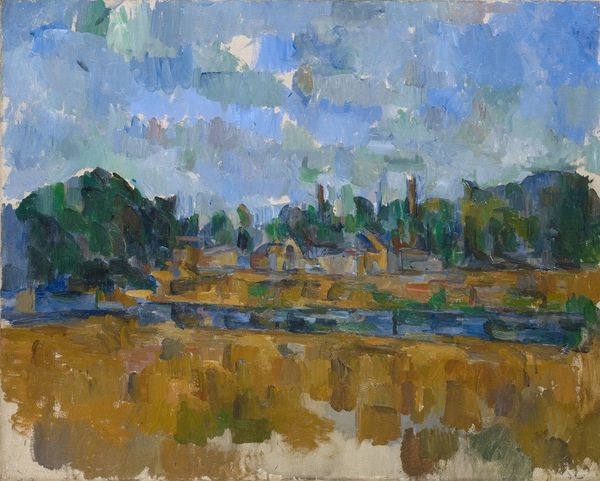
painting, plein-air, oil-paint, impasto
#
fauvism
#
fauvism
#
painting
#
plein-air
#
oil-paint
#
landscape
#
impressionist landscape
#
impasto
#
post-impressionism
Copyright: Public domain US
Editor: We’re looking at Jean Metzinger’s "Le Chemin a travers les champs," or "The Path Through the Fields," painted around 1904. It seems to me a really joyful and optimistic view of the French countryside rendered in a very bold impasto. How do you interpret the image, particularly its historical context? Curator: Well, what strikes me is its clear dialogue with the rise of modern leisure. This painting presents a pastoral scene not simply as untouched nature, but as landscape explicitly designed for recreation. Consider the path itself, manicured, leading towards a village also seemingly manicured. What relationship do you think this carefully arranged nature might have to urban development at the time? Editor: That's interesting. It does feel almost staged, I guess. Perhaps as a reaction against industrialization, a carefully constructed vision of what was being lost? Curator: Precisely! We must consider that many of these artists were painting in a period when the countryside was increasingly idealized as an escape. Note how Metzinger isn’t documenting a pre-existing reality; he's creating an *image* of idyllic leisure. The vibrant colors themselves contribute to that image, practically selling you on the promise of this escape, wouldn’t you agree? Editor: Yes, the color feels almost… commercial, in that sense. A packaged idea. I see the relationship you mean now, the art becomes a way to promote an experience of the space as much as a view from it. Curator: Exactly! And by displaying works like these in galleries, early promoters of modern art presented them not just as aesthetic objects but also invitations into a cultural moment. Editor: It's so interesting how a seemingly straightforward landscape painting can tell us so much about the social forces at play at the time! Thank you. Curator: My pleasure. Always consider who benefits from these depictions, and what socio-economic shifts made these visions possible and desirable in the first place!
Comments
No comments
Be the first to comment and join the conversation on the ultimate creative platform.
